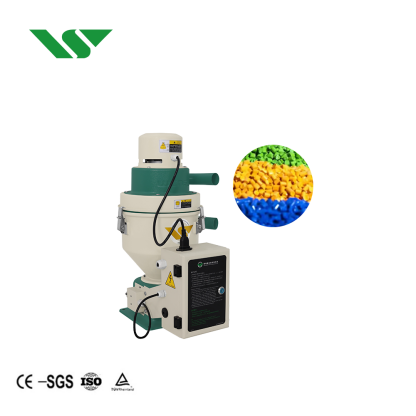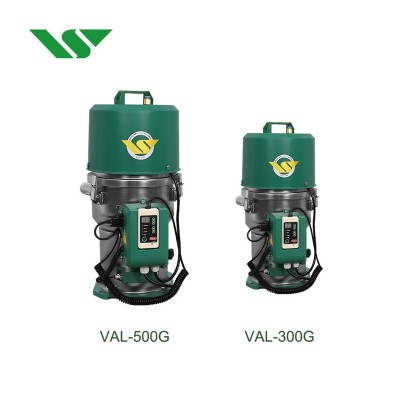7 Essential Strategies for Avoiding Risks in Centralized Feeding System Design
2025-03-20 Page view:
In injection molding operations, the design of a centralized feeding system plays a crucial role in determining production efficiency, cost control, and overall product quality. However, inadequate planning can lead to disastrous results, potentially causing multi-million-dollar systems to fail. Drawing from 30 years+ of industry experience and real-world cases, this article highlights 7 critical risks and offers actionable solutions to help businesses prevent hidden pitfalls, ensuring system stability and success.

1. Minimizing Energy Waste: Key Factors for Pipeline Design and Air Source Optimization
Energy consumption for pneumatic conveying systems in centralized feeding setups often accounts for more than 40% of total operational costs. A notable case involved a Japanese company facing a 42% increase in energy costs due to improper design of the main pipeline diameter. To avoid such inefficiencies, consider the following best practices:
· Pipe Sizing: Calculate pipe diameter based on the formula maximum throughput × 1.3.
· Pressure Stabilization: Install pressure-stabilizing tanks every 20 meters to maintain consistent flow.
· Simulation: Use Computational Fluid Dynamics (CFD) fluid simulation for layout optimization, which can reduce compressor energy consumption by up to 27%.
Actionable Steps:
· Use tapered pipelines to minimize pressure loss.
· Monitor air source pressure, ensuring fluctuations stay below 0.05MPa.
· Integrate heat recovery systems for air pipelines to reduce energy waste and improve ROI.
2. Preventing Cross-Contamination: The Three-Layer Defense Approach
Shared pipelines or drying systems can lead to material contamination. One automotive parts manufacturer faced costly scrapping of batches due to the mixing of PA6 and PP in shared cyclone separators. To prevent this, adopt the Triple Isolation Principle:
· Dedicated Pipelines: Use 304 stainless steel pipelines for each material.
· Independent Drying Systems: Ensure dew point differences of more than 15°C between units.
· Separate Filtration: Implement filtration systems with a precision gap of 0.3μm.
Preventive Actions:
· Use dedicated conveying lines for different materials.
· Implement dual-tower molecular sieve dryers with a dew point of less than −40°C.
· Maintain precise blending of recycled and new materials with an accuracy of ±0.5%.

3. Avoiding Pipeline Blockages: Safeguarding System Reliability
Pipeline blockages are responsible for over 60% of feeding system failures. A factory in Dongguan reduced its downtime by 85% by switching from vertical to 30° inclined pipelines with fewer bends. Here are some optimization strategies:
· Proper Sizing: Ensure the pipe diameter is greater than 10× the material’s particle size.
· Regular Maintenance: Clean filters and dust collectors every quarter.
· Safety Measures: Install infrared spark detectors with a response time of less than 0.1s to prevent explosions.
4. Planning for Scalability: Avoiding Hidden Costs in Expansion
A medical device manufacturer faced a 70% increase in system costs for retrofitting an underprepared feeding system. To avoid costly retrofits, always plan for capacity expansion by:
· Reserving Capacity: Ensure you have at least 20% extra capacity and three quick-connect ports for future scalability.
· Modular Design: Implement modular architectures for easier upgrades.
Design Guidelines:
· Size drying silos to accommodate peak demand × 1.2.
· Pre-wire smart control interfaces (e.g., OPC UA protocol) for easy integration.
· Use shared pipelines with quick-switch connectors for greater flexibility.
5. Managing Humidity Risks: Protecting Sensitive Polymers
Materials like ABS absorb moisture when ambient humidity exceeds 60%, which can damage the polymers. To protect sensitive materials, build a three-tier defense:
· Positive Pressure Control: Maintain a positive pressure of +5Pa.
· Heated Pipelines: Keep pipelines at a constant temperature of 40±2°C.
· Advanced Drying: Use dual-tower molecular sieve dryers with a dew point of less than −40°C.
Key Monitoring Actions:
· Deploy online dew point sensors for real-time humidity data.
· Calibrate humidity sensors weekly, ensuring accuracy within ±2%.

6. Optimizing Human-Machine Interaction: Ensuring Operational Safety
In one case, a factory lost 3 tons of material due to accidental manual mode activation. To safeguard operations, implement a robust three-tier access control system:
· Access Levels: Differentiate access for operators, technicians, and administrators.
· Authentication: Require biometric and password verification for access to critical system parameters.
· Emergency Stops: Ensure emergency stop mechanisms have a response time of less than 3s.
Safety Protocols:
· Conduct monthly training sessions on system operations for staff.
· Install photoelectric guards in hazardous zones to protect workers.
7. Preventing Dust Explosions: Critical Safety Measures
Dust explosions can occur when polyethylene (PE) dust concentrations exceed 30g/m³, with only a small ignition source (as little as 5mJ) required to trigger an explosion. To mitigate the risk of dust explosions:
· Grounding: Ensure pipelines are properly grounded, with resistance under 4Ω.
· Inerting: Use nitrogen to lower oxygen levels below 8%.
· Explosion-Proof Components: Install explosion-proof electrical components in areas prone to dust accumulation.
Immediate Actions:
· Verify air source pressure stability (fluctuations < 0.05MPa).
· Check hopper level monitoring accuracy (error < 1.5%).
· Test emergency shutdown response times regularly to ensure quick reaction in case of danger.



